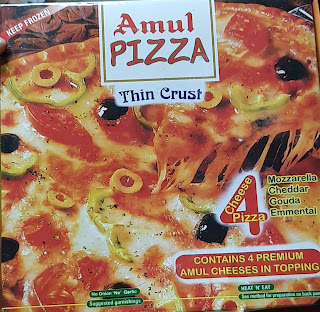Analyzing Supply Chain Strategy - Case of Indian Pizza Supply Chain
A Push Supply Chain Strategy is characterized by standardized
SKUs made available in anticipation of demand. The strategy is deployed when
the total lead time of Supply Chain is longer than the wait time available with
the customer.
Amul launched Pizza close to two decades back. Probably the total number of cities where Amul launched Amul Pizza (as a pilot) may have exceeded the total number of operational outlets that closest competitor may have had across the country.This was the scale of launch. Since then Pizza business has come to along way in India.
I have met so many people whom I ask this question - Do you know Amul sells Pizza? And overwhelming majority have "No" for an answer.
One of the most efficient Supply Chains in the Milk & Milk product sectors whose Supply Chain efficiency & branding puts itself in the top quartile of that line of business, had an early mover advantage in Pizza business (I bet in 2001 when Amul launched its Pizza business it certainly had all the ingredients of being an early mover) has not found Pizza to be a household name as much as Amul "Cheese", "Butter" or "Milk.
It's the Supply Chain Strategy that probably needs to be analyzed than its broad Marketing Strategy.
A. Supply Chain Network design - Centralized Production system with nodes of the Supply Chain facilitating finished goods storage. Point of Sales is a Inventory storage point with no capability of assembly.
B. Supply Chain Planning - Demand & Distribution planning have to be "Backward" planning systems. Forecasting based Demand planning with Distribution pushing the inventory down the channel to avoid stock outs at consumption (POS) points.Supply Chain planning hence is like a FMCG product Supply Chain characterized by Product level aggregation.
C. Product Portfolio - Standardized portfolio in limited variety of Pizzas is available at the outlets. Consumer walks in to pick up a Pizza which either is heated at the outlet or one pick & carry to be consumed later.
D. Consumer wait time - With the shelf available product the delivery time is reduced as the packed pizza has to be ordered (in contrast to its Competitors where a 20 to 45 minutes wait time exists) but that is at the cost of inflexibility in the product variety.
E. Standardized v/s Customized Pizza - Consumer of Pizza wishes a customized pizza to be delivered. A Push Supply Chain can't do that else its Product Proliferation will be unmanageable.
F. Inventory Management - The mismatch of inventory at Supply Chain nodes due to Demand - Supply mismatch is a source of Supply Chain loss and also poor freshness experience for the consumer.
Its just that One Company One Supply Chain Strategy doesn't work. Pizza is a product which needs customization, consumer wishes to have a personal experience and more importantly, freshness of the product is consumers need AND NOT ONLY PRICE (which Amul Pizza still may be the cheapest Pizza in the town!)
In contrast to Push Supply Chain, most of the competitors of Amul in the Pizza business deploy a Push - Pull strategy where the product remains as a generic product (in the form of cut vegetables, sizes of breads, cheese etc etc) till its final assembly stage where customer specifications drive the final product configuration.




Nice blog..providing food for thought for supply chain fraternity
ReplyDelete